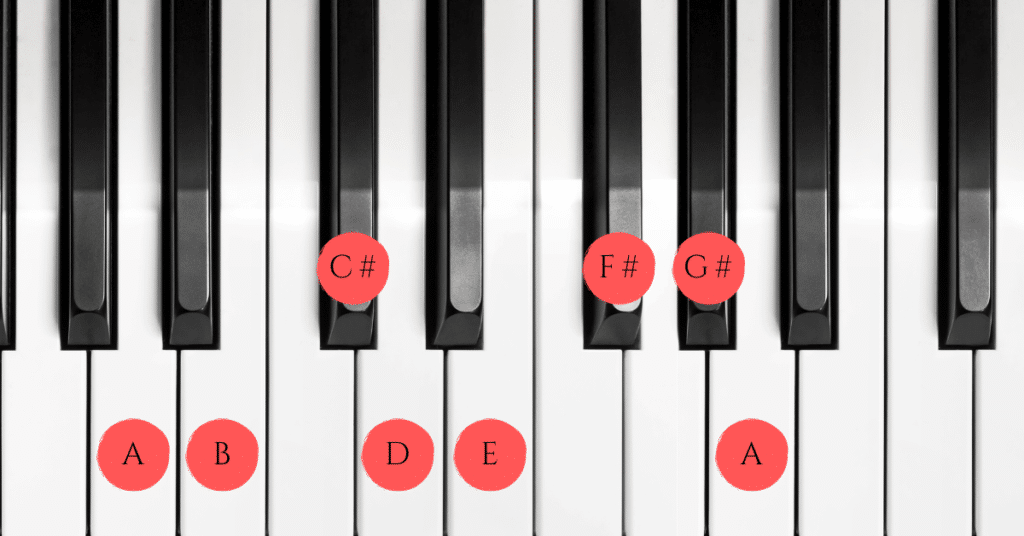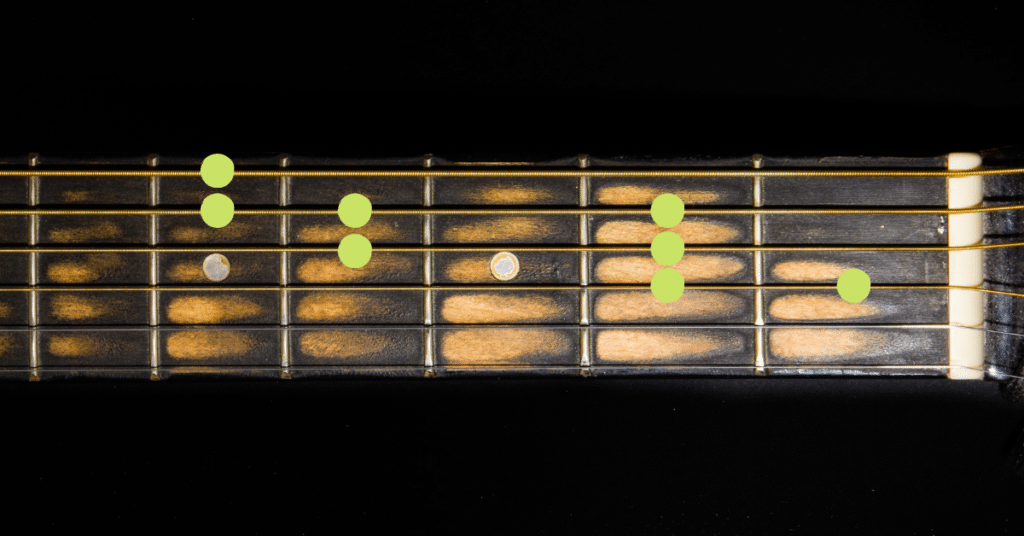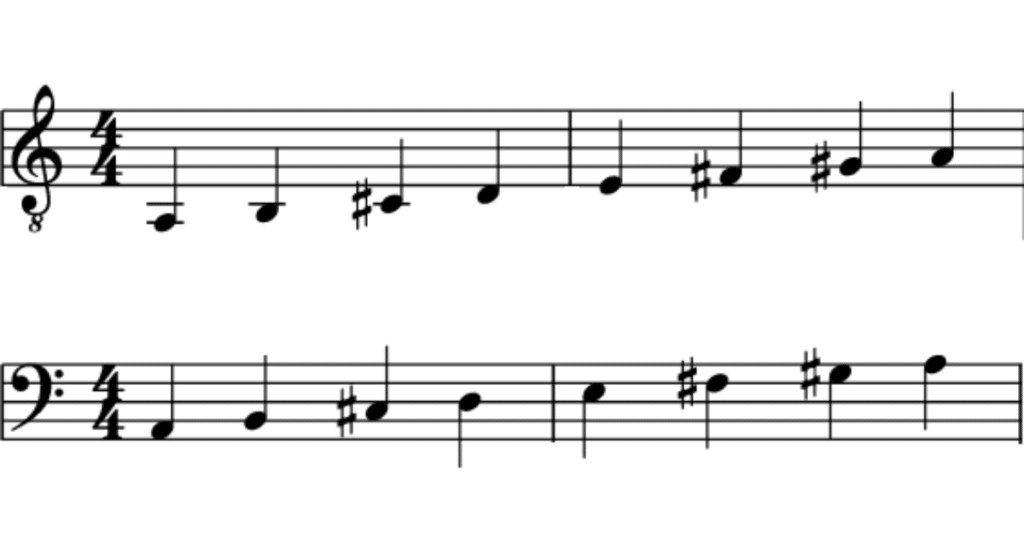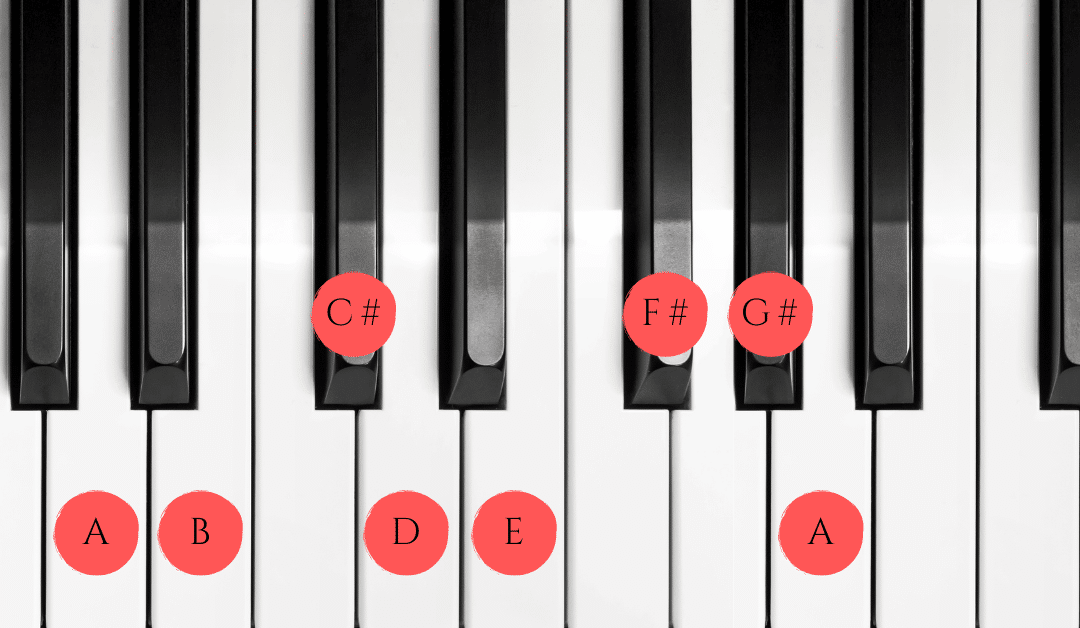Any musician who is beginning his or her studies in music theory will surely turn his or her attention to musical scale practice, no matter what instrument he or she is playing. The scales will reinforce the skill in the interpretation of songs and help understand the structure of the tonalities, both in the study of melodic lines and in the study of harmony. Due to its nature, the A major scale is the right choice for experienced players who wish to expand their skills.
What is it?
The scale of A major is nothing more than a scale of musical notes that are structured in intervals of one tone between each degree, with the exception of degrees III – IV and VII – I, where the distance is half a tone, and whose main note (commonly called tonic) is La. That is, the A scale degree is built starting from note A and continues leaving a tone between each note, except between the third and the fourth and between the seventh and the first.
In this way, we can say that the notes that make up the A major scale are:
- I – A (A) : tonic
- II – Si (B) : supertonic
- III – C sharp (C#) : via
- IV – D (D): Subdominant
- V – E (E) : Dominant
- VI – F sharp (F#) : Superdominant
- VII – G-sharp (G#) : Sensitive or subtonic
Thus, it is the tonic A which, being the first note of the scale, gives its name to the scale, and is categorized as major due to the structure of its intervallic distances.
A major scale patterns
A very useful way to practice the A major scale, both in theory and in practice, is to visualize it on instruments such as the piano or guitar. These instruments are very common among those musicians who begin their musical studies and, due to their visual character, they help to better identify the notes that belong or not to the scale. Thus, see in the following image the pattern of the A major scale over an octave of the piano:

Then, it can be noticed that in the piano the A major scale is distributed in such a way that three of its notes are located in the black keys and four in the white keys. At first glance, it might seem trivial to identify the keys of the piano on which the scale is placed, but knowing the position of its notes has certain advantages. First of all, we will be able to identify the intervallic distances between each of the notes more easily.
For example, if we are on the tonic of the A major scale and we want to find its fourth or its fifth, we must count from the tonic to the right following the pattern in the image.
On the other hand, learning by heart the position of the scale on the piano, as well as on any other instrument, will speed up our ability to play and improvise since, instead of wasting time trying to identify where one note or another is placed, we can proceed to play continuously guided by some score or by our own creativity.
In the same way, we can visualize a series of patterns on the fretboard of a guitar. Identifying the notes that belong to the A major scale and the distance between each one of them.

It is important to note that the pattern shown in the image of the fretboard for the A major scale on the guitar is not the only one. Along the neck, you can find other patterns with different positions varying to the tonic of that scale across the six strings.
A major chord in 3 Easy Ways! | Beginner Guitar Lesson
A major scale and other instruments
Unlike other scales, such as the G major scale, the A scale does not provide as much versatility with as many instruments in terms of playing it.
Scales such as the D or G major scale can be played on stringed instruments such as the guitar, violin, double bass, cello and mandolin with little difficulty, the A major scale requires a little more practice. This is because this scale has more accidentals (sharps or flats) and very few stringed instruments have tunings that allow us to reach any string tuned with accidentals.
Thus, for example, while when playing the G scale on the violin we find on the four strings notes belonging to that scale, when playing the A major scale we will only find three strings, forcing us to use more effort in the interpretation.
Harmonizing the A major scale
A very important aspect of the scales is the harmonization of the scales. Harmonization consists of building chords on each note of the scale taking as a basis the key given by the main note (see harmonizing major scales). Thus, when harmonizing the A major scale, taking into account that it has three accidentals (C sharp, F sharp and G sharp), the following chords are obtained:
| Grade | Chord Name | Chord Formula |
| I | The largest | A |
| II | B minor | Bm |
| III | C sharp minor | C#m |
| IV | D major | D |
| V | My eldest | E |
| VI | F sharp minor | F#m |
| VII | G sharp semi-diminished | G#Ø |
So, you could play a chord progression with the chords shown in the table and this chord progression would be in the Major key of A (name corresponding to the tonic chord). However, playing two or even three of these chords does not in itself guarantee that the song being played is in the key of A major.
For example, a song could be composed with the chords A major, D major and F sharp minor and such a song could be based on either the A major scale or the D major scale.
Importance of this harmonization
Harmonizing the A major scale formula creates a world for study, composition, instrumental performance and improvisation on any song in the key of A major. This world will be composed of all the possible chord combinations that can be made with the chords obtained from the harmonization of the A major scale. In the same way, the original scale still plays an important role, since it can be used to construct a large number of melodic lines that can be played in conjunction with chord progressions.
Thus, any musician who wishes to expand their knowledge and mastery of music theory, as well as improve their ability to perform a song and improvise based on it, should make use of the harmonized A major scale.
To do this, you could take the chords obtained from the scale as a basis and build progressions. The following examples of chord progressions in the key of A major may serve as a reference.
A major chord progressions
- A – D – E – A
- A – F#m – D – E – A
- A – E – D – E – A
- A – C#m – Bm – E – A
- A – F#m – Bm – E – A
These chord progressions are basic and can be played repeatedly at the musician’s preferred tempo. At the same time, as practice for improvisation, you can play along with the progressions some melodic line built with the notes of the A major scale. This will help improve the ability to complement harmony and melody as a single figure that, in agreement, creates music.
Musical notation of the scale
Studying the musical notation of the A major scale can be an advantage in learning the theory. However, it will not only help to increase fluency in the reading of the musical language, but it will also enable the musician to perform better in later interpretations of songs in the key of A major.
With greater skill in reading the music, the performer and/or composer will have greater ease in performing it on their instrument, introducing arrangements if necessary and improvising. The following image illustrates how to write the A major scale in both G and F clef.

So, let’s suppose we want to play some song written on a pentagram notebook. Before proceeding to read any musical figure that may be written, it is very important to identify the key of the song. To know if this song is written in the key of A major, we must make sure that the only accidentals (sharps or flats) correspond to the notes C, F and G.
When we find a piece written with those three accidentals, we can proceed to identify the position of all the notes of the A major scale in our instrument. This will speed up the playing process since we will know in advance in which parts of the instrument the notes of the piece to be played should fall.
Harmonized scale notation
Even if it is uncommon, chord notation on the musical staff helps to better understand the chord structure. That is, by expressing them with the help of traditional musical language you can visualize which notes, belonging to the A major scale, make up each chord and the distance between each one of them. However, it would be a purely theoretical practice, since when doing chord notation the most convenient thing to do is to use the usual chord notation, such as D, Em, C#m, etc.
A major and minor scales
Although they can be confused, the A major and A minor scales do not represent the same object. Both scales are built from different principles and, therefore, have different sound behaviors. While the A major scale has an intervallic distance between its third and fourth notes of a half-tone, the A minor scale has an intervallic distance of one tone. In the same way, harmonizing the A minor scale would result in chords very different from those obtained in the major scale.
Intervallic distances of the A major scale
For a better understanding of how the A major scale is structured, see the pitch separation between each note of the scale:
| A | – | B | – | C# | – | D | – | E | – | F# | – | G# | – | A |
| – | 1T | – | 1T | – | 1/2T | – | 1T | – | 1T | – | 1T | – | 1/2T | – |
Thus, altering any of these distances would imply a change in the functionality of the scale as a whole.
The relative scale of A major
On the other hand, we can find a scale that shares the same accidentals with the A major scale. This alternate scale (commonly called relative) has the same key signature, i.e. the sharps and flats. Thus, both having the same accidentals, they also share the same notes and, with them, the same chords. The relative scale of A major is the scale of F sharp minor (F#m).
An interesting aspect of the A major scale and its relative is the duality between the two scales. That is, if we find a song written in the key of F sharp minor, we could improvise, arrange or compose on that song just by knowing the A major scale. The two scales complement each other, even if they are used for different purposes.
How do you know if a song is in A major or F sharp minor?
Certainly, the two scales have the same notes and chords. Thus, when reading a score that has sharps in the notes C, F, and G, we could assume that it is written in the key of A major or in the key of F sharp minor.
Either answer could be very accurate, but the song can’t be in two keys at the same time. Thus, the most convenient would be to identify the notes on which the song rests. That is, if the song ends its sections with an A note, we can assume that the key is A major. Otherwise, if the song ends its sections with an F sharp, we could affirm that the key corresponds to the relative, but it would not be enough. In any case, a detailed study of the melody and harmony together with the use of experience will determine the respective tonality.
Conclusion
The A major scale can be very useful for those who have previous experience in playing the instrument. Its chords can be used to compose chord progressions with an expressive character of their own sonority and, with practice, can be complemented with varied melodic lines that help the musician to better identify the alterations at the moment of interpreting the song.
Looking for another major scale pattern? Check out our other guides:

